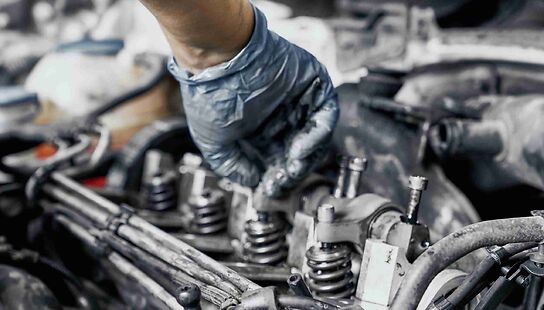This article discusses the testing and the overhaul of fuel injectors of marine engines,the testing of the needle and guide condition of the fuel valve, and the procedure to overhaul and inspect the injectors taken out of the marine diesel engines.
Fuel Valve Checks

The fuel valves taken out from the engine must be checked for function and performance. Even in engines which are stopped on heavy fuel oil in ports the fuel injector taken out must be immediately tested with diesel oil before they get cold as this will flush and clean the components. It must be noted that if the fuel valves taken out are tested after they have cooled, will show bad performance even if they were performing satisfactorily in service.
In the majority of cases the fuel injectors have a good spray profile but they open up at a less pressure. The pressure adjustment can be done without opening up the valve and should be done so. The engine manufacturers also instruct that unless the fuel injector valve has a major problem like holes choked or valve dripping, they should not be opened up. The valve should be cleaned from the outside, pressure checked, pressure adjusted and tagged.
Inspection and Repairs
In the case where the fuel injector valve is not performing as required and has some defect, then it needs to be opened up and overhauled. The assembly and the disassembly have to be done as per the instructions given by the engine manufacturer. However, below is a general guide about what you will most likely have to do.
After the fuel valve has been disassembled then the following checks have to be done:
1. The needle guide should be immersed in clean diesel oil and the needle taken out and checked for free movement. In the case of any resistance which may be due to the presence of carbon or fuel sludge the needle may be put in and pulled out in succession many times while keeping it submerged in diesel oil. It is important to do this in a container full of clean diesel oil so the contaminants can be flushed away.
2. After the needle guide has been cleaned, the needle should be taken almost out and then let it fall in with its own weight. A free and smooth movement with small jerks as the clearance is making way for the oil to come out is an indication that the clearances are all right and the needle guide is in good condition. It must be noted that the needle should fall fully into the seat.
3. On the other hand if the needle falls fully in one go, then the clearances have increased and the fuel will leak past the spindle and less fuel will go in the cylinder. The needle must be inspected for any wear marks if this happens. The needle guide can be used but must be changed soon.
4. If the needle does not go down and gets struck then it must be thoroughly cleaned again. If still there is no improvement then the needle might have become bent. Check the needle for any signs of overheating.
5. The push rod end should be checked for any abnormal wear.
6. The seating between the nozzle body and the valve body if damaged can be repaired by lapping with fine lapping paste. It must be noted that the lapping paste should be thoroughly flushed away with clean diesel oil and thereafter blown dry with compressed air.
7. Check the nozzle spring for breakage, poor seating and other defects. Change if required.
8. Check the leak off pipes, shims, packing etc for the condition. If the fuel valve is water cooled, the cooling pockets should be cleaned with compressed air.
Tests and Adjustments
1. After the parts are cleaned and inspected the fuel valve is assembled as per the manufacturer’s instructions and thereafter tested for function and performance.
2. The assembled fuel valve is installed on the test stand and after purging the pipe line the manual handle is operated in quick succession. The nozzle should start discharging with a sharp crackling noise at the set pressure. The pressure at which the injector is supposed to fire depends upon the manufacturer’s engine design but normally is between 250 to 350 kg/cm2 with an allowance of plus or minus 10 kg/cm2.
3. In case the lifting pressure is not correct, it can be adjusted by the adjusting screw.
4. The spray characteristics should be satisfactory and as per the manufacturers advice.
5. All the holes of the injector should be firing and can be checked by a torch light or a filter paper can be folded as a cone and then the injector tested. The holes on the filter paper will show the number of holes firing. In this procedure you must be careful as the high pressure spray can enter the skin and is toxic for us.
6. The spray angle should be as stated by the manufacturer. The atomization of the fuel should take place and solid spray should not come out.
7. Clean diesel oil should be used for the testing purpose.
8. In the case that the fuel valve is dripping the needle guide should be taken out and repaired.
Caution
The needle and the guide is always a pair and should not be interchanged with another one. Cleanliness is the most important factor in making fuel valves. A clean fuel valve lasts a longer time. The fuel under pressure can enter the skin and the blood stream and is toxic for humans. Take care that you stay away from the spray. The fine mist can catch fire and in inflammable. Do not smoke or use naked lights where the fuel injectors are being tested.


